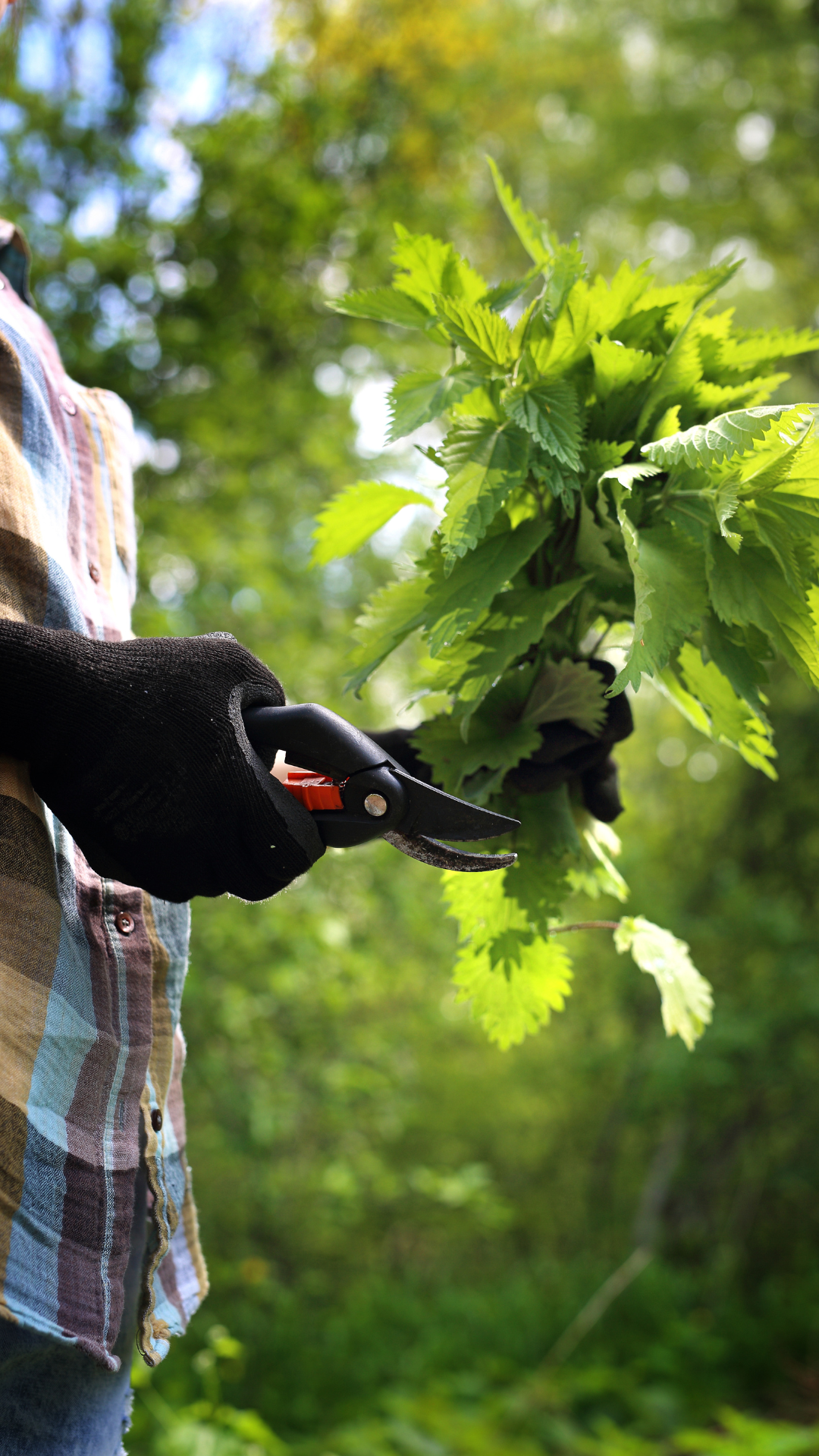Foraging for Nettles
nettles, my first love
When I first began studying herbal medicine, I literally knew nothing about plants. I was a city girl and the only plants I really came into contact with were the ones on my plate!
I must say though, that even 6 years into practicing medical herbalism, i'm still a beginner when it comes to actual physical plants and I love learning about them!
When I first heard that people ate nettles I was like WHAT?! You can eat what?? Why would anyone even want to touch nettles, let alone eat them. Oh how clueless I was!
I'm sure you've been stung from a nettle plant before.. and it’s just the most annoying thing, right? Nettle plants are covered in teeny-weeny hairs that act like mini needles. When you come into contact with the plant, those needles inject histamine and other chemicals into your skin and this is what causes the sting. The irritation usually lasts for hours and after a while you won't notice it any more.
One or two stings here and there are probably bearable, but if you want to pick nettles then you're going to need protection.
But why would someone want to pick stinging nettles?
Well because they are SUPER nutritious and you can make delicious nettle soups like this one here
If you’re new to nettle or herbs in general, find out more about its therapeutic benefits here.
Foraging for Stinging Nettles
There are a few important rules to follow when picking stinging nettles
First things first, remember to WEAR GLOVES! One or two stings are bearable but can quickly become very irritating as you'll get much more than that when harvesting.
The best time to pick stinging nettles is in the early spring when the plant is young and tender. You can pick them later on in the season but be sure to get to them before they flower. Don't bother picking them once you see flowers on them.
When you pick them, take the top leaves only. The leaves on the nettle plant are arranged in pairs (opposite one another), so with a pair of scissors, just cut the stem taking about 3 pairs of leaves. This is usually about a third way down a young plant.
Once collected, let them sit for a bit to wilt. Once wilted, you're much less likely to get stung as the needles aren't as erect. From here you can wash and prepare as usual.
Enjoy xo
When using this blog, any link you click may result in an affiliate payment to me, I earn a commission from qualifying purchases, at no extra cost to you.


